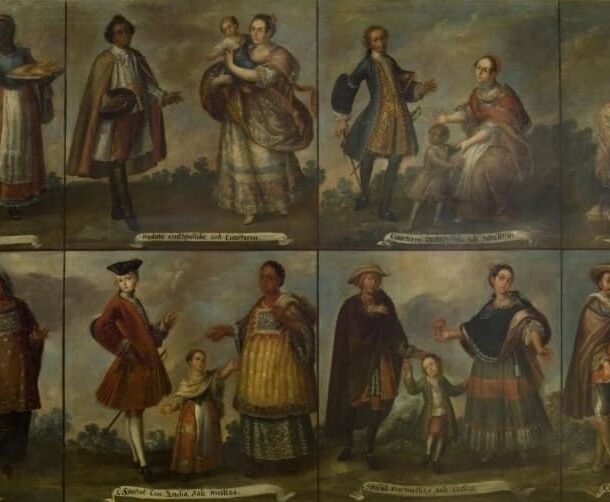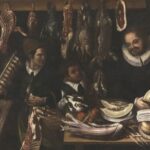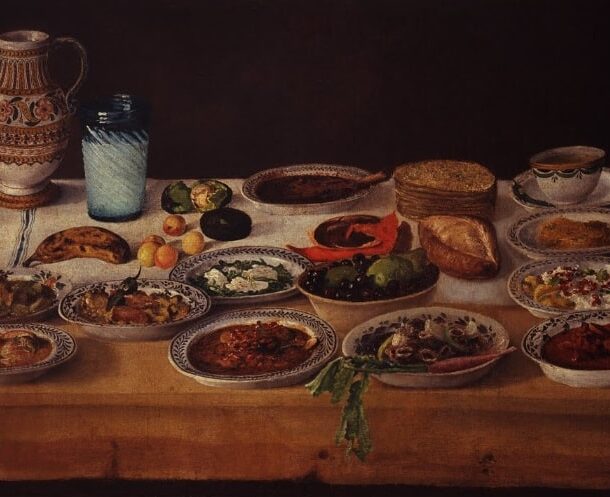
This genre of decorative paintings for domestic settings, with market scenes, kitchens and other settings with still lifes and figures, was intended to provoke laughter in the viewer through the physical qualities of the shopkeepers or through moral defects such as gluttony. Thus, their function had a moralising significance, alluding to sayings or commonplaces known to the people of the time. Despite the rudeness of these still lifes, Baroque-era creations contain a polysemy that made them complex even at that time, such as the fact that the painting is written in Latin, which shows that they were intended for a specific public due to the level of erudition shown. Thanks to this type of work, clues can be sought in the study of food or clothing and, through this, of the social types existing at the time. On the right is a gentleman holding an open melon, dressed in the typical court costume of the courtly sphere.
Collection: Images
Project: 4. Family, daily life and social inequality in Europe.
Chronology: XVII
Scope: Secondary Education, Baccalaureate
Link: https://artsandculture.google.com/asset/bodeg%C3%B3n-con-figuras/nwFEangJR7YEpw
Resource type: Image
Format: Oil on canvas (128 x 167 cm)
Source: Museo de Bellas Artes de Granada (Granada, España)
Language: Spanish
Date: 1606
Owner: Álvaro Romero González (Modernalia)
Identifier: CE0126
Copyright: Museo de Bellas Artes de Granada (Granada, España)
Abstract: Still life around food, depicting Spanish costumbrismo in the 17th century
Image
Tags







